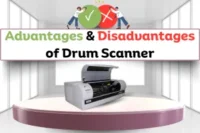How to Install Network Printer on Mac: A User-Friendly Tutorial
Published: 7 Mar 2025
Are you struggling with how to install a network printer on Mac? It can seem tricky at first, especially when you’re unsure if your printer is properly connected or configured.

But don’t worry! In this guide, I’ll break down each step, making the process simple and easy to follow. Before we move on to the step-by-step guide for installing a printer, let’s first understand a few things about network printers.
Understanding Network Printers
A network printer is a printer that connects to your home or office network, allowing multiple devices to use it without needing a direct connection. This makes it easier to print from any device, whether you’re in another room or even in a different part of the office.
What is a Network Printer?
- A network printer connects to your Wi-Fi or Ethernet network, not directly to a computer.
- It allows multiple devices, like Macs, PCs, tablets, and smartphones, to print from anywhere on the network.
- Network printers can be either wired (Ethernet) or wireless (Wi-Fi).
Why Use a Network Printer?
- Convenience: Print from any device connected to the network without needing to plug in or physically connect to the printer.
- Sharing: Multiple users can access and use the same printer, saving space and money.
- Flexibility: Print from different rooms or locations as long as you’re connected to the same network.
How to Install a Network Printer on Mac: Step-by-Step Guide
Installing a network printer on your Mac is a simple process that can be done in just a few steps. Follow this guide to set up your printer quickly and start printing wirelessly.
Connect the Printer to the Network
- Wi-Fi Enabled Printer: Go to your printer’s settings menu and select your Wi-Fi network. Enter the Wi-Fi password if prompted.
- Ethernet Connection: Plug one end of the Ethernet cable into the printer and the other into your router to establish a wired connection.
Open System Preferences on Mac
- Click on the Apple menu in the top left corner of your screen.
- Select System Preferences.
- Choose Printers & Scanners.
Add Printer
- In the Printers & Scanners window, click the “+” button to add a new printer.
- Your network printer should appear in the list. Select it and click Add.
Step 4: Install Printer Drivers (if necessary)
macOS usually detects and installs the correct drivers automatically. If not, you might need to download the drivers from the printer manufacturer’s website.
Step 5: Test the Printer
Once the printer is added, click on it in the Printers & Scanners menu and select Print Test Page to ensure everything is working properly.
Troubleshooting Tips: Quick Fixes for Network Printer Problems

If you’re having trouble getting your network printer to work on your Mac, don’t worry—common issues can usually be fixed with a few simple steps. Here are some tips to help you troubleshoot and solve the most common problems.
Common Issues & Solutions
Printer Not Showing Up:
- Make sure both your printer and Mac are connected to the same Wi-Fi network. If they’re on different networks, the Mac won’t be able to find the printer.
- Try restarting both the printer and your Mac to refresh the connection.
Printer Not Printing:
- Check if the printer is powered on and has enough paper and ink/toner.
- Look for any error messages or blinking lights on the printer that might indicate a problem (e.g., paper jam, low ink).
- Ensure the printer’s queue is not stuck with an old print job.
Pro Tip: “If your Mac can’t find the printer, make sure both devices are on the same Wi-Fi network. Try restarting both the printer and your Mac.”
Advanced Options (Optional)
If you’re still having trouble with your network printer or need to set up more than one, there are some advanced options that can help. These steps will guide you through adding a printer manually or setting up multiple printers on your Mac.
Using IP Address to Connect
- If the printer doesn’t show up automatically in the list, you can add it manually using its IP address.
- To find the printer’s IP address, check the printer’s display screen or its settings menu (usually under “Network” or “Wi-Fi” settings).
- On your Mac, go to System Preferences > Printers & Scanners, then click the “+” button.
- Choose IP from the list at the top, and enter the printer’s IP address. Select the printer type (e.g., HP, Epson, Sharp, Canon, Konica), then click Add.
Adding Multiple Network Printers
- To add more than one printer, repeat the process above for each printer.
- In Printers & Scanners, click the “+” button again and follow the same steps for each additional printer.
- Each printer will appear in the list, and you can select which one to use for printing from different apps.
Common FAQs:
Here are some of the most frequently asked questions by users about installing a network printer on Mac.
Most printers display the IP address in their settings or network menu. You can also print a network configuration page from the printer’s settings to find it. If unsure, check your router’s connected devices list.
Make sure the printer is connected to the network and both devices are on the same Wi-Fi. Restart the printer, your Mac, and your router to refresh the connection. If the issue persists, try adding the printer manually using its IP address.
macOS often installs drivers automatically when you add the printer. If not, visit the printer manufacturer’s website to download the correct drivers. Follow the installation instructions provided on the site.
Yes, as long as all devices are connected to the same network. Follow the same setup process on each Mac to add the printer. The printer will then be available for all connected devices.
Make sure your Wi-Fi network is working and that the printer supports wireless connections. If only Ethernet is an option, connect the printer to your router and proceed with the setup on your Mac.
This happens if the printer is turned off, disconnected, or not on the same network. Turn it on, check the network connection, and ensure there are no errors on the printer display. Restarting both devices often resolves the issue.
Yes, you can connect it directly to your Mac using a USB cable or set up an ad-hoc Wi-Fi connection if the printer supports it. However, a router provides more flexibility for multiple devices.
Go to System Preferences > Printers & Scanners. Select the printer you want to remove and click the “-” button below the list. This will remove the printer from your Mac.
Yes, as long as your Wi-Fi network is secure and password-protected. Avoid sharing printers on public networks to keep your data safe. Using a strong network password adds an extra layer of protection.
Absolutely! Follow the Mac setup guide for macOS and use the manufacturer’s instructions for Windows. Both operating systems can share the same network printer if they’re on the same network.
Check the printer menu for Wi-Fi settings or look for an Ethernet port on the back. These are common signs of a network-enabled printer.
Conclusion:
So champs, in this article, we’ve covered how to install a network printer on Mac in detail. Setting up a network printer is easier than you might think, and once it’s ready, you can enjoy the freedom of printing wirelessly from anywhere. My personal recommendation? Always test the printer with a test page after setup to ensure everything is working perfectly. If you face any issues, don’t forget to check out the troubleshooting tips I’ve shared. Have questions or additional tips? Don’t hesitate to drop them in the comments below!
Bonus Tips
Here are some bonus tips that can help you with printer troubleshooting.
- Restart Devices if Setup Fails: If the printer isn’t detected during setup, restart your Mac, printer, and router to refresh the connection.
- Use a Static IP Address: Assign a static IP to your printer for a more reliable connection and easier troubleshooting.
- Use Same frequency: If you’re using a dual-band router, make sure your printer and Mac are connected to the same frequency (2.4 GHz or 5 GHz)
- Router Settings: Check your router settings to ensure no firewall or security feature is blocking communication between the Mac and the printer.
- Check Printer’s Wi-Fi Signal Strength: Ensure the printer is within range of your router to avoid weak signals that can disrupt printing.
- Installing with USB: Use a USB cable to set up the printer initially if Wi-Fi setup fails, then switch to network printing once configured.
- Label Your Printer on the Network: Name your printer in the settings for easy identification, especially if multiple printers are on the same network.
- Keep Printer Software Updated: Regular updates ensure compatibility with the latest macOS versions and fix bugs.
- Turn On Printer Notifications: Enable notifications on your Mac to get alerts about paper jams, low ink, or other issues.
- Organize Printing Preferences: Set default print options like duplex or grayscale to save time and resources.
- Use Manufacturer Apps: Many printers have dedicated apps that offer additional features like scanning, maintenance, or advanced printing options.
- Backup Printer Settings: Save your printer’s configuration details to quickly restore them if you need to reset the device.

- Be Respectful
- Stay Relevant
- Stay Positive
- True Feedback
- Encourage Discussion
- Avoid Spamming
- No Fake News
- Don't Copy-Paste
- No Personal Attacks

- Be Respectful
- Stay Relevant
- Stay Positive
- True Feedback
- Encourage Discussion
- Avoid Spamming
- No Fake News
- Don't Copy-Paste
- No Personal Attacks



